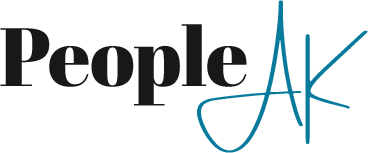According to Gallup research, teams with engaged employees saw reduced rates of employee turnover and absenteeism. These same teams also saw greater profits, increased customer loyalty, and boosts in sales productivity. While increasing employee engagement requires both time and money, the data doesn’t lie; cultivating employee engagement is a solid investment for businesses.
Whether you have an active employee engagement strategy or are at the beginning stages of creating one, here are some important tactics to consider.
Build Trust
At the core of employee engagement is trust. Employees should trust both their leadership and the organization as a whole.
For leaders, building trust starts with transparency. By sharing key information with team members, everyone will be on the same page. For example, rather than saving company financial metrics for top executives, you might consider including everyone in these conversations through staff-wide quarterly reviews.
By promoting transparency, you can also increase communication. When cued into top-level company information, team members can ask questions and propose new ideas. The result is one of lessened hierarchical divides. When team members feel more connected to their company and its leadership, engagement increases.
Give Autonomy
We’ve discussed how employees need to trust their leadership. In a similar fashion, employees must also feel trusted by their supervisors. For leaders, one of the most effective ways to cultivate this trust is by giving their employees the freedom to complete tasks in a manner of their choosing.
For example, rather than micromanaging teams as they engage in a project, leaders should present the goals of a project and allow their teams to figure out the rest. Managerial involvement should take on a role of supportive leadership rather than prescriptive supervision.
By giving them autonomy they will feel more responsible for their work and empowered to do their jobs.
Be Flexible
Apart from a select few industries, flexible employers are the new norm. To engage your team members, you’ll need to be unafraid to consider alternative approaches to conducting business.
Workplace flexibility can take many different forms. Casual dress codes, work-from-home capabilities, and unlimited PTO are all common ways to help lower the stress of employees; however, different groups of employees will be interested in different benefits.
For leadership, the key is to open yourself to feedback. If multiple people on your team express an interest in having flex Fridays––a dedicated day with no meetings or in-office commitments––then it’s up to leadership to figure out how to accommodate this. Doing so will help employees feel heard and trusted. Moreover, it demonstrates that leadership listens to their concerns.
Offer Continued Learning
Particularly with younger generations, workers appreciate employers who offer internal opportunities for learning and advancement. A LinkedIn study finds that 94% of employees would stay at a job longer if it offered opportunities for career advancement.
Continued learning opportunities can take several forms. Some companies provide reimbursement for company-approved training or courses. Another approach involves devoting time for employees to teach other skills or how to use tools to improve productivity.
You might also consider sitting down with each employee and asking about their career goals. Once you have these outlined, you can explore the ways in which a team member can achieve these goals in-house.
By investing in your employees in this manner, you’ll not only help retain your teams, but you’ll also help build more skilled team members who will share their skills with your company.
Invest in Your Work Culture
Nearly half of those looking for jobs (including those currently employed) cite company culture as one of their primary motivators. If employees feel safe, heard, and valued by their colleagues, then they’re more likely to be productive and engaged at work.
To invest in the creation of a positive work culture, consider the following:
- Celebrate wins with the team. When a person achieves success in their role, you should take time to single out these successes. Doing so demonstrates that you appreciate their work, and it also motivates other team members.
- Allow time to talk about life unrelated to work. People collaborate more effectively when they get to know one another beyond professional capacities. That’s why you could dedicate time in meetings to casual conversation. You might also consider having regular dinners or coffee outside of the workplace.
- Promote a healthy work/life balance. Even when given unlimited PTO, many diligent workers end up not using it. As such, leadership should actively encourage employees to take time off when they need it.
- Provide regular feedback. In addition to praising any successes, you’ll also want to provide team members with regular feedback––both praise and constructive criticism. This helps team members know where they stand, ultimately increasing their feelings of safety in their roles.
Create a Great Onboarding Process
Employee engagement should start with the onboarding process as this first impression can set the tone for their experience. For a successful onboarding experience, you’ll want to:
- Pair new hires with a mentor or buddy who will guide them through the process and answer any questions.
- Stage a formal welcome lunch, during which time the new hire can meet the entire team.
- Prioritize job-specific training over other types of training, allowing new hires to familiarize themselves with HR, IT, and other helpful departments.
- Create a list of tasks to help new hires ease into their role with your company.
Jump Start Your Engagement Efforts
Cultivating an engaged, productive, happy team should be a top goal for any organization. It means less money allocated to searching and onboarding new employees, more productivity, and an overall more pleasant and fun working environment. To ensure you’re taking the right steps––from onboarding to retention––you might want to call in the experts.
PeopleAK has decades of experience helping businesses build, scale, and retain employees. We use proven processes, researched data, and analytics to determine the right path for you to achieve your goals–whether that’s creating a successful employee engagement strategy or onboarding top talent.
If you’re ready to start up-leveling your team, PeopleAK is here for it.

